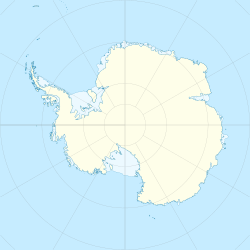Yoke Island facts for kids
|
Location in Antarctica
|
|
| Geography | |
|---|---|
| Location | Antarctica |
| Coordinates | 63°58′S 61°56′W / 63.967°S 61.933°W |
| Archipelago | Palmer Archipelago |
| Administration | |
| Administered under the Antarctic Treaty System | |
| Demographics | |
| Population | Uninhabited |
Yoke Island is a small, uninhabited island located in a very cold part of the world called Antarctica. It is also known by another name, Islotes Los Provincianos. This island is part of a group of islands called the Palmer Archipelago. Yoke Island lies to the west of the northern end of Liège Island.
Contents
Discovering Yoke Island
Yoke Island was first mapped by a group of explorers from France. This was during the French Antarctic Expedition led by a famous explorer named Jean-Baptiste Charcot. His expedition explored this area between 1903 and 1905. Mapping an area means creating detailed charts and maps of it.
How Yoke Island Got Its Name
The name Yoke Island was given by the United Kingdom Antarctic Place-Names Committee (UK-APC) in 1960. They chose this name because of the island's unique shape. A "yoke" is a wooden bar that connects two animals, like oxen, together. The island looks like a yoke both from above (its flat shape) and from the side (its height).
What is the Palmer Archipelago?
The Palmer Archipelago is a group of islands located off the northwest coast of the Antarctic Peninsula. It includes many islands, with the largest being Anvers Island. These islands are known for their icy landscapes and are home to various types of wildlife, like penguins and seals.
Life on Yoke Island
Like many islands in Antarctica, Yoke Island is uninhabited. This means no people live there permanently. The harsh, cold environment of Antarctica makes it a challenging place for humans to live. However, these islands are important for scientific research and for the wildlife that calls them home.


